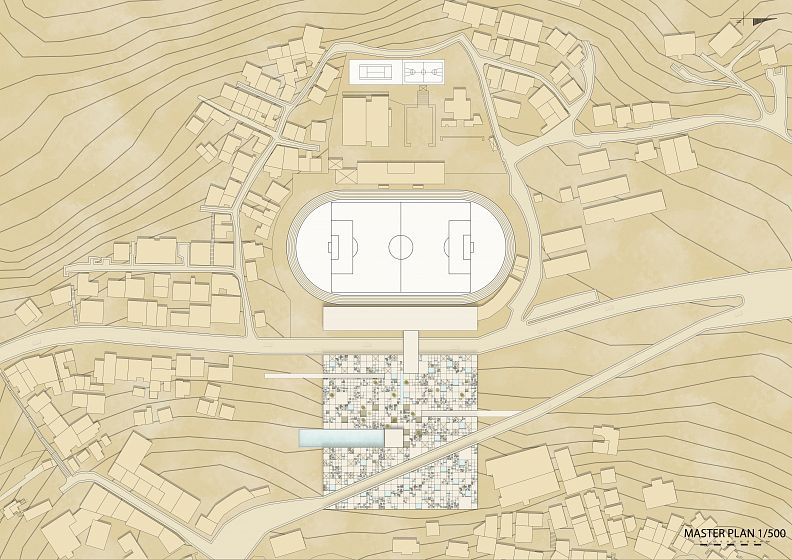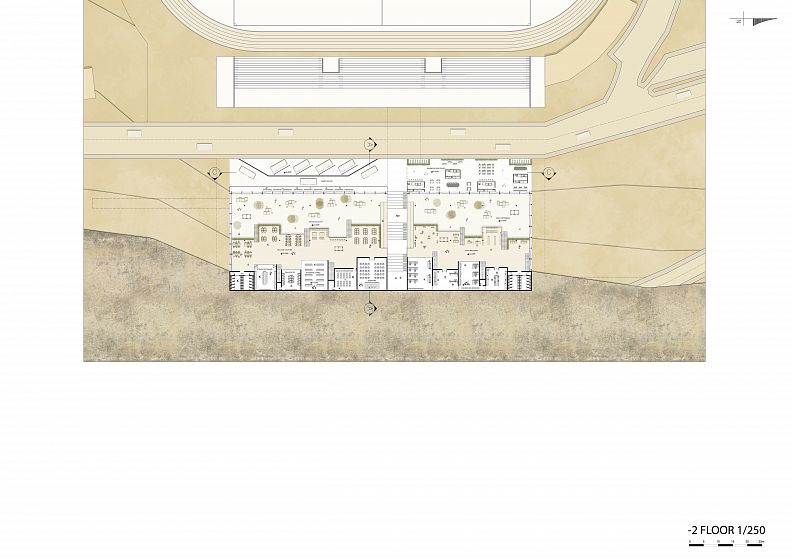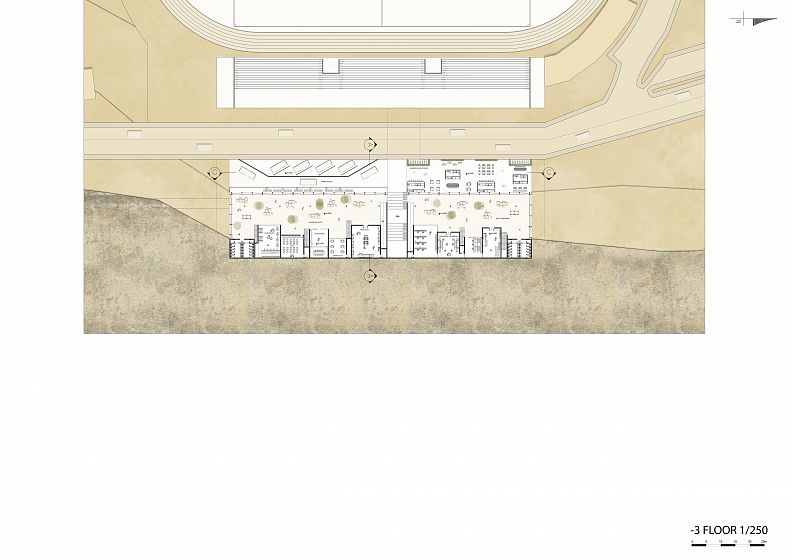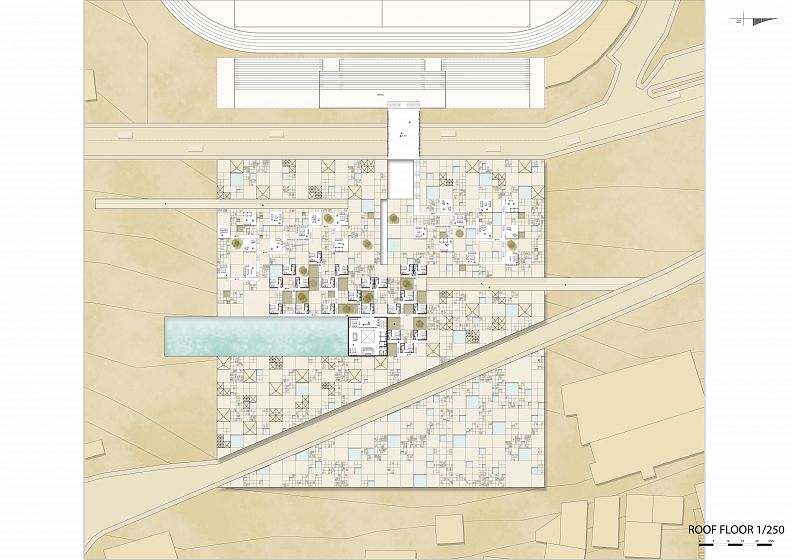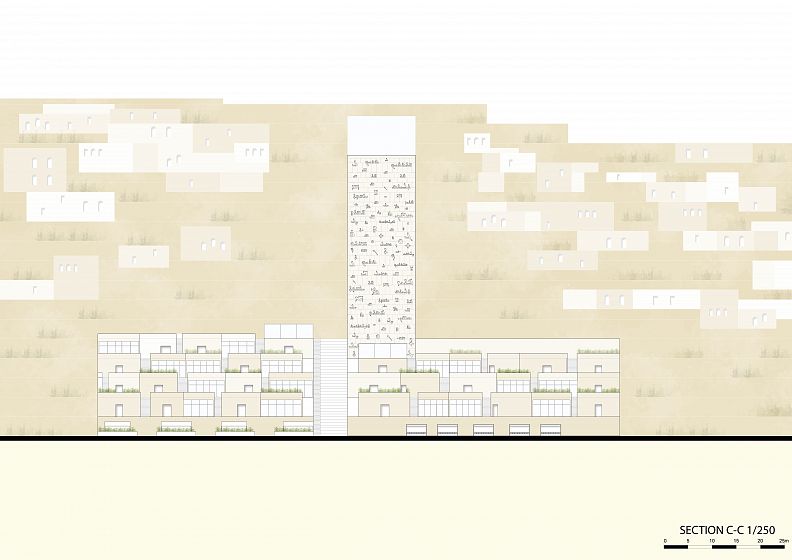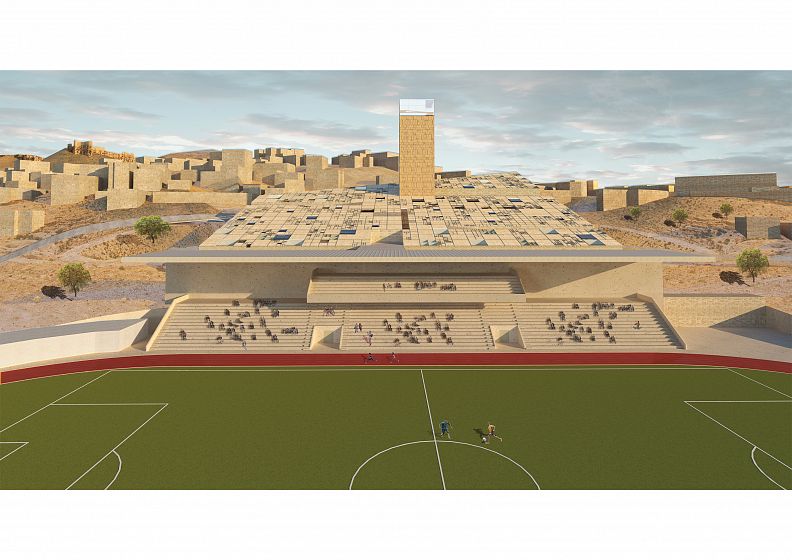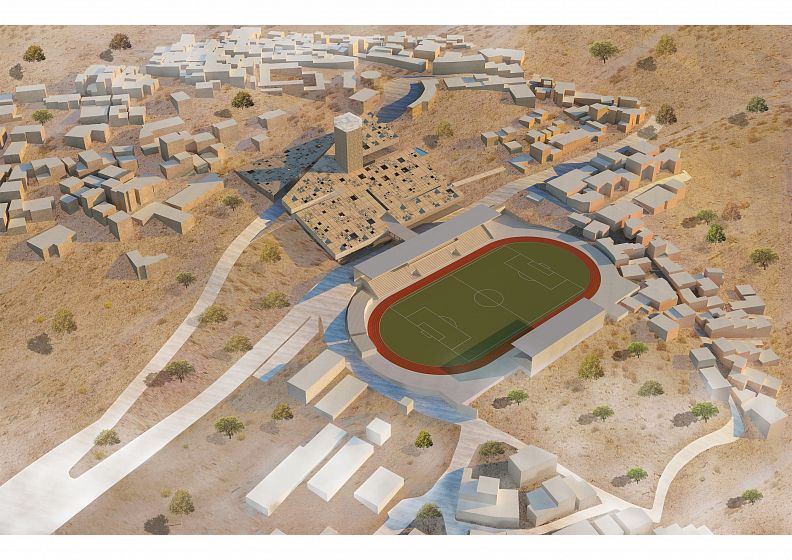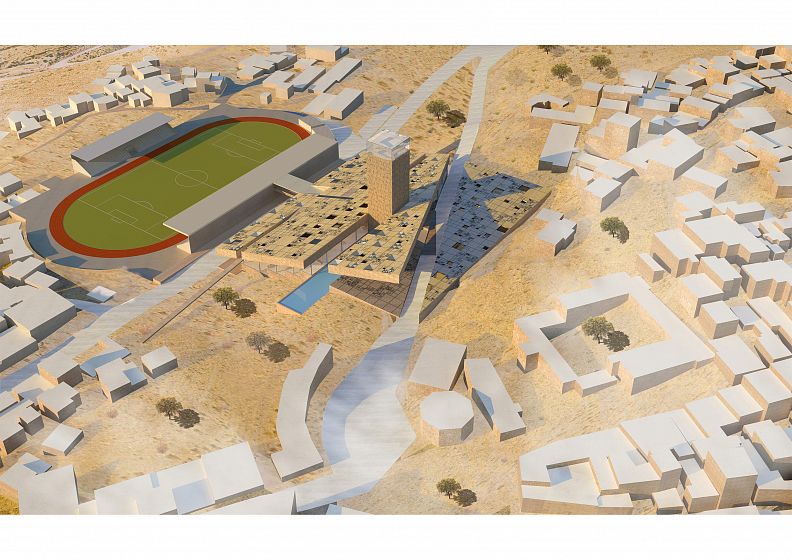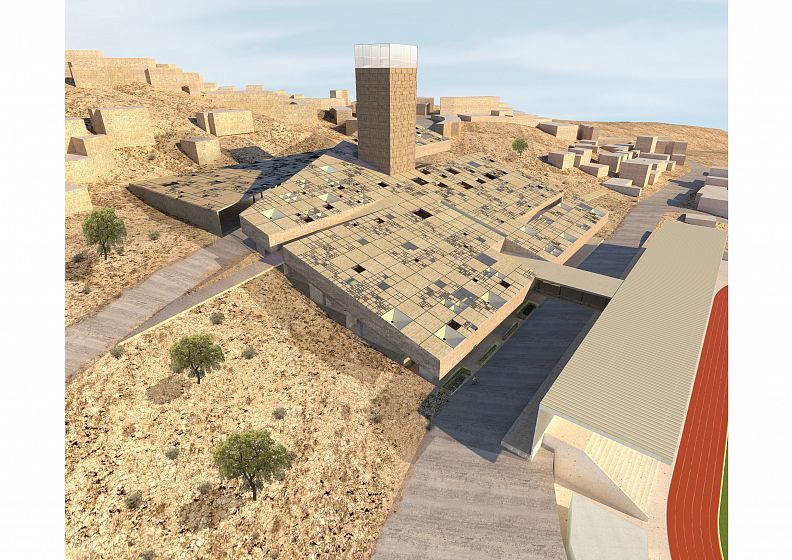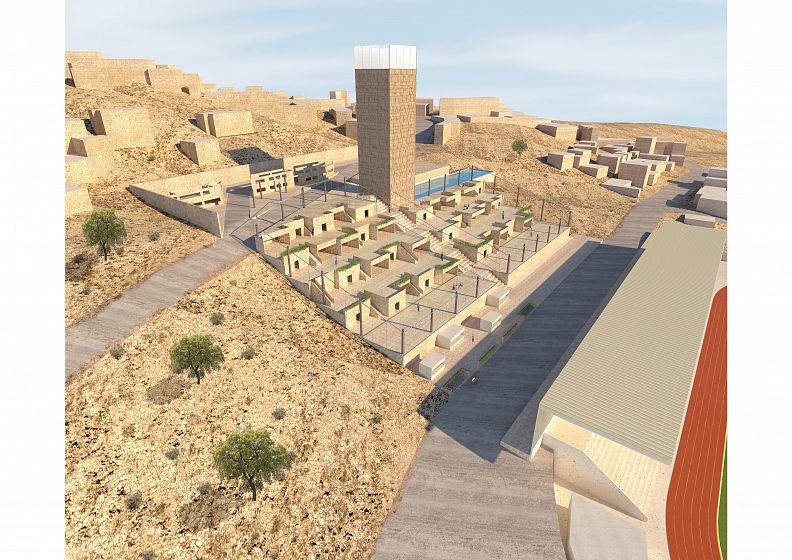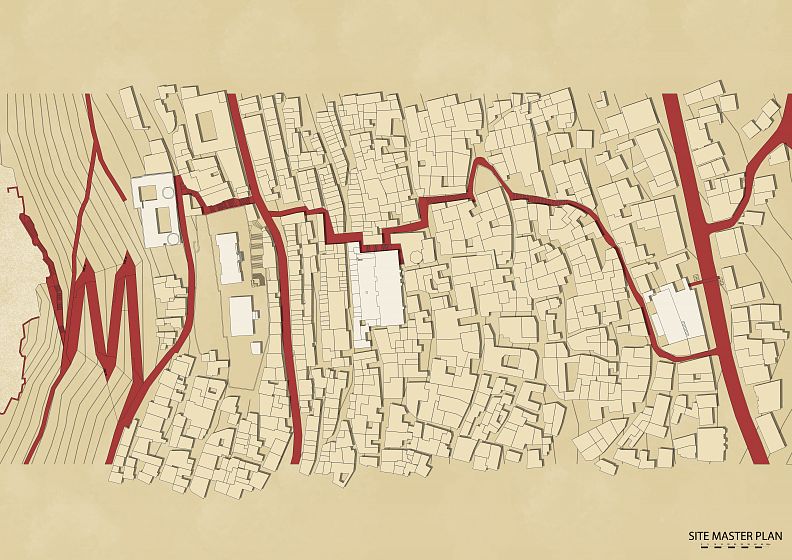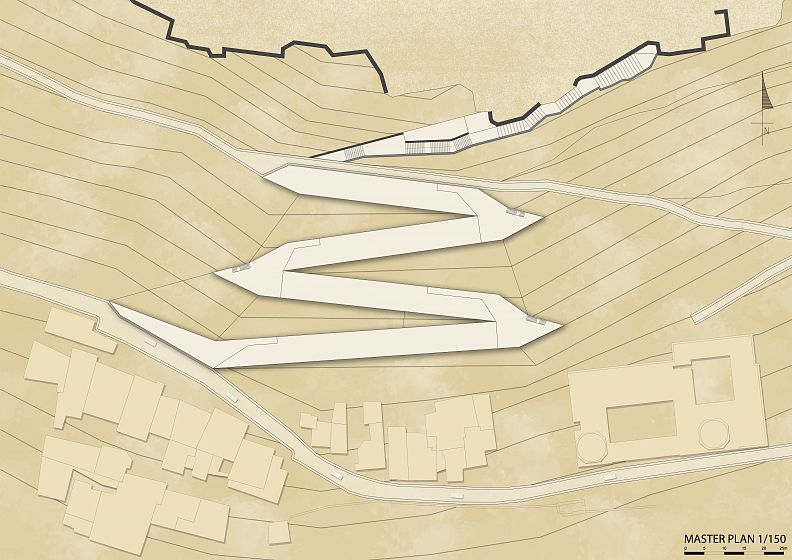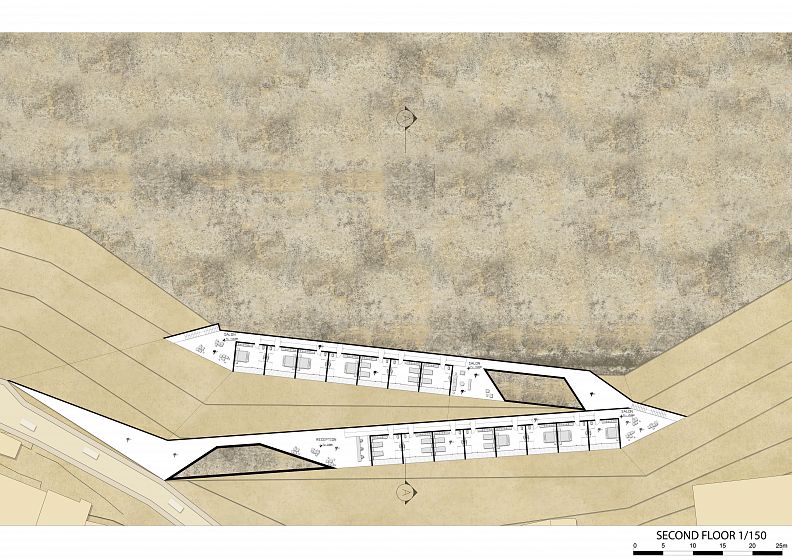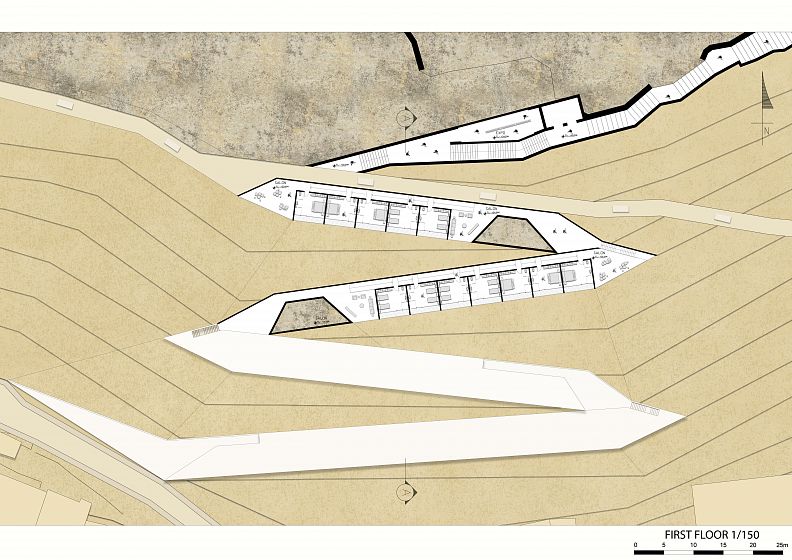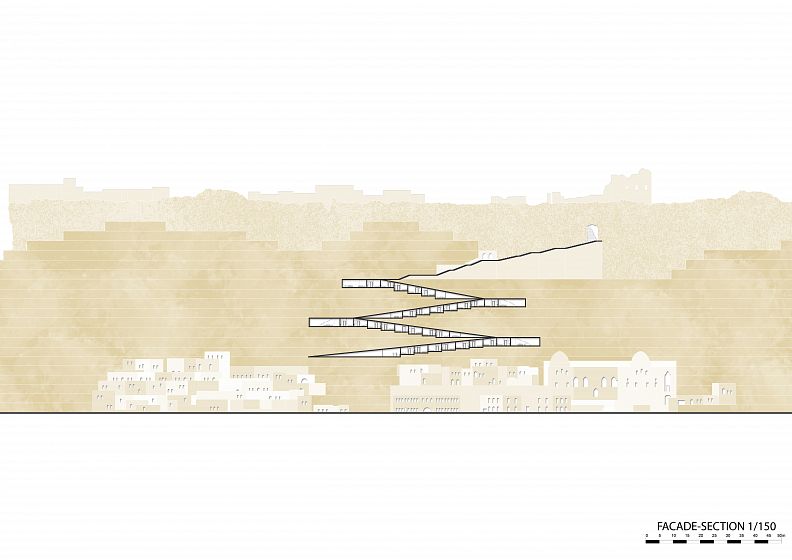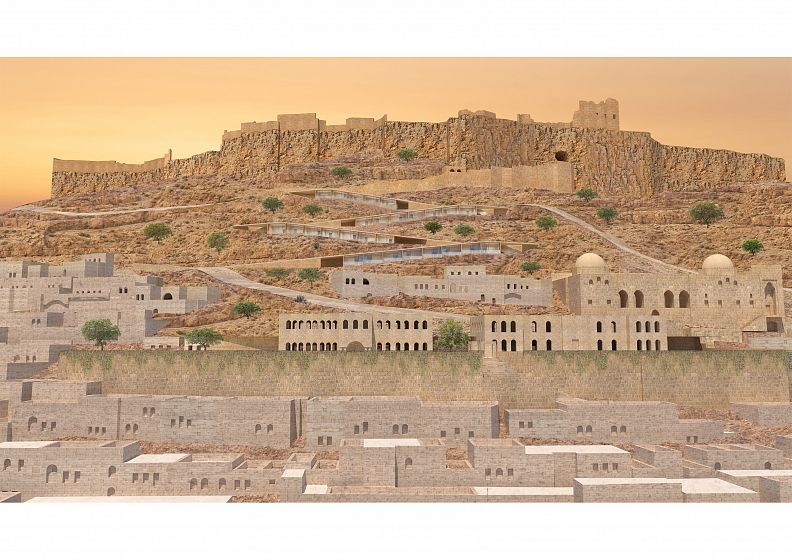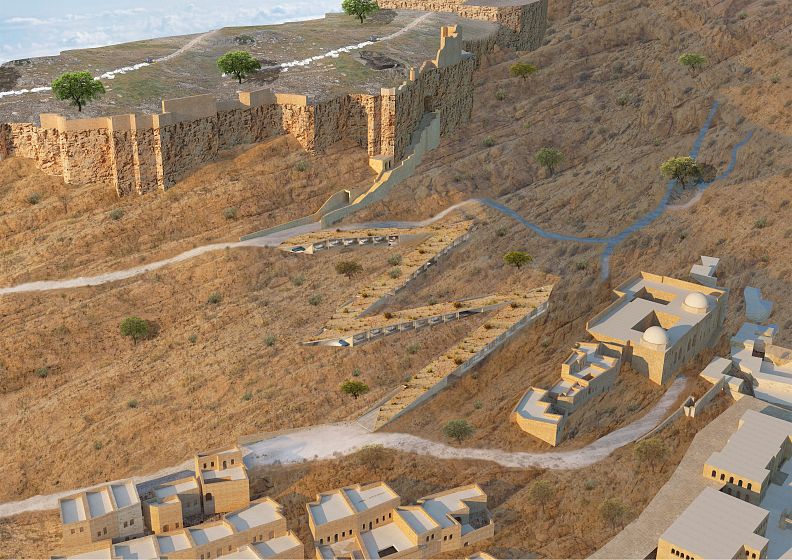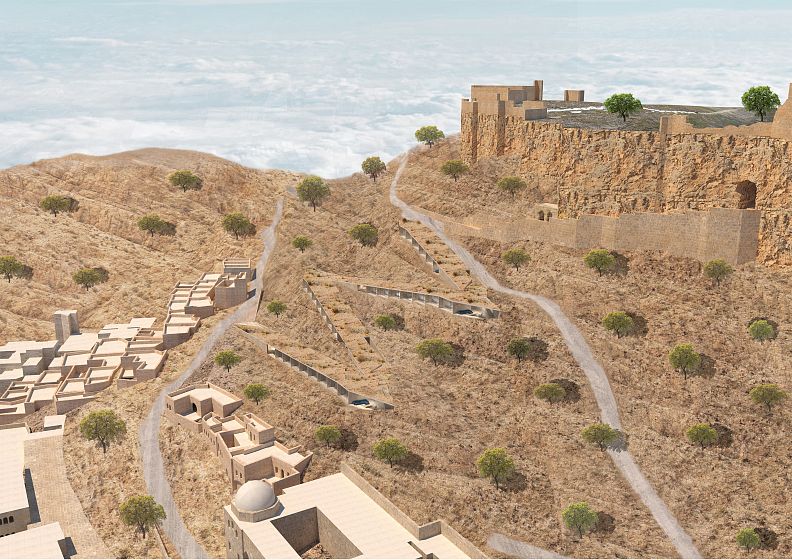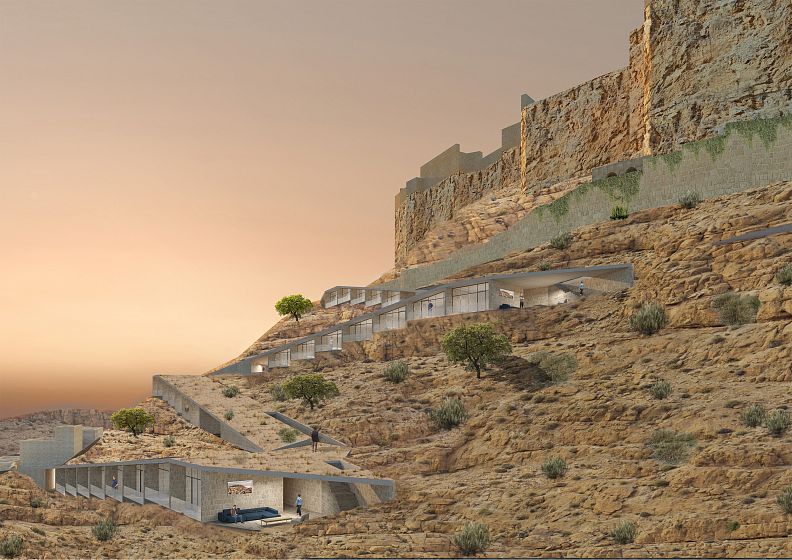The cradle of civilizations, the gate city "MARDIN"

Project idea
The idea of the project:
I chose this site emotionally because it was the hometown where my grandfather was born and raised. But at age of 16, he was forced to flee the region because of the SAIFO genocide caused by the Ottomans against the Aramaic people. 105 years later, I had the chance to visit this magical city and discover its hidden treasures, this visit will forever remain in my memory.
Context:
Mardin, located in southeastern Turkey, sits on a rocky elevation of 1250m altitude that rises above the plains of Mesopotamia, just on the northern edge of Syria and western Iraq.
Problematic:
The city faces three interfaces:
- Cultural interface: Between the Syriacs and the Turks.
- Age interface: Between the old and youth habitants.
- Historical and touristic interface: Between the citadel and the old city.
We can deduce that it is a fragmented city without coherence, nor structuring link between these fragments. The Internal limits are blurred, unclear and variable.
Goals and objectives to be reached:
- To connect these fragments while keeping the charm of each.
- To create a dialogue between these fragments while increasing the yield of this city.
- To make porous boundaries between the different fragments.
Program responds to:
- The needs of citizens on a social, cultural and economic level.
- The conservation of the archaeological site.
- The touristic needs.
It’s a system that infects the site, each of which interface meets the needs of the fragments it touches.
Project description
LIBRARY DESCRIPTION:
Mardin library is conceived on a magnificent site between the ancient and the new city. The 5,000 m2 open reading room, shaped same as Mardin houses occupies more than half of the library volume and is stepped over five terraces. In addition to the library facilities, it also contains other cultural and educational functions including crafting workshops, research center for Syriac studies, and an underground museum for historical Aramaic manuscripts.
From the heart of the building rises an obelisk that reaches up to 45 meters in height. The Aramean alphabet carvings on its facades marks the craftsman shift of the locals. This prestigious steeple recalls the ancient minarets and provides the city with a new symbol for learning and culture. Its design is both timeless and bold.
Inside the canopy, lodging units where conceived to be used by researches who study and work in the center. In addition to that, the roof includes private reading units, a water and energy harvesting system deduced from the Tahiliye flower that grows on the piles of limestone rocks in Mardin.
An open plaza and reflecting pool surrounds the building. A footbridge links the library to the nearby football stadium, used as a seasonal crafts exhibition created by locals inside the library workshops.
Designed as a revival of the ancient city founded by the Syriacs some 2000 years ago and lost to civilization centuries later, Mardin Library is a contemporary design that will contribute meaningfully to locals, researchers and visitors. Its vast rectangular form alongside Mardin houses resting on the golden slopes of Mesopotamia recalls the cyclical nature of knowledge, fluid throughout time.
LODGING AND HIKING TRACK DESCRIPTION:
The intervention scheme consists of four zig-zagging components, softly tilted to merge into a continuous exterior path from roof to ground, inviting guests to ascend on towards the castle resting on the top of the mountain. Further addressing the valley context, the five stacked slabs gently unfold to form terraces overlooking the beautiful landscape of the Mesopotamian plane.
The volume concludes an addition to the castle’s stairs, a route inspired by the historical city. The path forms a connection between the castle and the medieval city, creating a dialogue between two architectural landmarks.
Underneath the slabs a single corridor connecting bedrooms, a bar, and sitting rooms all orientated towards the valley, taking advantage of sweeping views and natural light, while also acting as individual destinations along the sloping path.
Technical information
LIBRARY DETAILS:
The project derives its architecture from the specifities and natural materials of the site.
The inside of the volume is where the architecture most glorifies the acts of knowledge and learning. The warmth of the natural limestone finishes and the staggered floor arrangement create thrilling moments of space that represents the shape of old mardin houses. Richly textured stone wall finishes, meticulous tree structural articulations.
Reading areas and private functions are arranged at close proximity at the same level, cultural functions being placed at each terrace level, underneath the next higher terrace. This way, the readers who are sitting at the terrace edge, enjoy maximum exposure to natural light and grand views of the space while being in close proximity to the associated book storage and other functions.
An innovative ecological system that collects rain water and sunlight energy is placed inside the library’s roof, the objective is to harvest water and electricity with an eco-friendly way. This system is concluded from a plant called Tahiliye that grows in the area. Tahliye umbels are desert species, they are green and grow the most during the spring when water is available, then set seed and dry out completely above ground before the hottest part of the year, while storing the energy they gained from photosynthesizing and water that was available to them in their deep roots and humidity in their flowers.
Basking in diffuse sunlight pouring through the roof, with the sculptural playfulness of an oppenings sequence break down the enormous space further into a delicate interplay of details on an appreciably human scale.
The minaret is carved with Aramean alphabetic inscriptions in a careful display in front of the whole city. Indirectly lit by vertical, north facing skylight in the roof, the inside of the minaret will not be exposed to direct sunlight that is harmful to books and manuscripts stored inside.
LODGING AND HIKING TRACK DETAILS:
The project derives its architecture from the specifities and natural materials of the site.
Conceptually, the rooms are separate units inside the sloppy terrain conceived as caves. The chambers are inserted within two retaining walls clad in limestone reminiscent of traditional Mardin houses. A passage links these rooms to pubic living areas and secondary entrances on the edges of the slopes. A green roof covers the chambers, merging them further within the surrounding landscape. The main reception in addition to other public spaces are strategically located on each level of the volume with a commanding view of the city below. The predominantly glazed facades dilute the boundaries between internal and external while reinforcing the image of “caves” strung underneath the historical citadel.
Co-authors
Project was supervised by prof. Alphonse Kai















